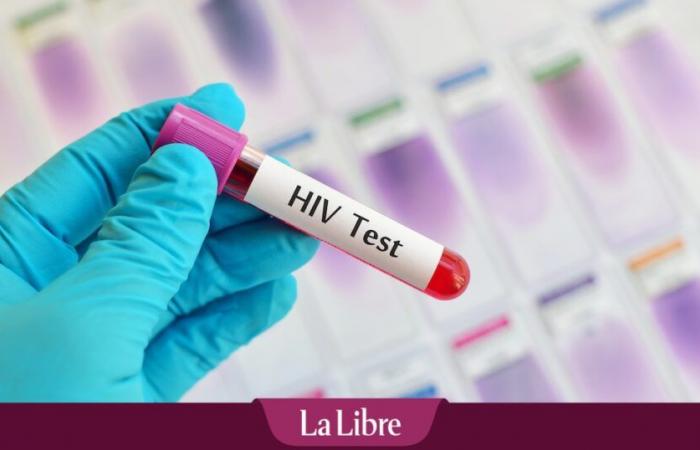
“This increase interrupts the continuous decline previously observed among Belgian MSM,” comments Sciensano, who continuously monitors the epidemiological situation of HIV in Belgium. The largest increase was seen in the 30-49 and 60+ age groups. Among women, half of new diagnoses were among women in sub-Saharan Africa, where the number of diagnoses remained stable after the significant increase in 2022. However, many people born abroad appear to have contracted the infection after arriving in Belgium. Late diagnoses, associated with increased health risks, are more common among non-Belgians“.
HIV: a seventh case of probable cure after a bone marrow transplant
Continue prevention efforts
This upward trend in HIV diagnoses clearly shows that the virus continues to spread and that the epidemic is still not under control, requiring additional efforts. “This situation reminds us of the importance of continuing prevention efforts, once again underlines the AIDS Prevention Platform (PPS), and especially since today a set of effective tools to reduce the risk of HIV transmission exists. . This is called combined prevention, which is based on the use of condoms, the use of screening and the use of treatments to minimize the risk of HIV transmission.
However, access to these tools and their knowledge remain insufficient, regrets the PPS. “This lack of knowledge can lead to an erroneous perception of risks, therefore leading to risky behavior, by preventing individuals from choosing the prevention methods best suited to their lifestyle. It is therefore crucial to continue to raise public awareness on these tools and on HIV in general. It is also necessary to remove the financial and administrative barriers which limit their use. Also, in response, the PPS launched the campaign “Combined HIV prevention, talk about it as you want, but talk about it”.
As part of this campaign, which is aimed at both adolescents and adults, some 700,000 condoms have been distributed, making it possible to promote it while reminding people that it remains an essential means of protection against HIV and STIs. In order to improve access to various prevention tools, the PPS calls on the competent authorities to “continue to support, or even strengthen, funding allocated to the prevention of HIV, sexually transmitted infections, as well as sexual health in general, in order to reverse the evolution of infection curves.”
As for the factors that seem to prevent HIV prevention from reaching its full potential, there are several types, according to Sciensano: “Some people are exposed to HIV without being aware of the risk they run and therefore do not adopt appropriate prevention measures. In addition, HIV prevention is hampered by the decline in the use of condoms, even though they have been a crucial prevention method since the start of the epidemic. Additionally, although PrEP use among MSM continues to increase, the increasing number of diagnoses in this group suggests continued gaps in coverage. And other high-risk groups face barriers to accessing and using PrEP effectively“. These factors are further aggravated by the increase in other sexually transmitted infections (STIs), such as gonorrhea and chlamydia, in Belgium. Indeed, people with an STI are at greater risk of infection with the HIV if they are exposed to it.
Recommendations
In order to strengthen the fight against the HIV epidemic, Sciensano makes the following recommendations: offer extensive sexual and relationship education, both in schools and through prevention actions on the ground and other information channels in order to better inform about risks and prevention; encourage the use of condoms and facilitate their access, as an effective means of preventing HIV and other sexually transmitted infections; optimize access to other prevention tools for young people and people at risk; promote HIV and STI screening among young people and people at risk by relying on easily accessible structures such as family planning centers and other prevention structures, in order to promote early and regular screening; expand access to PrEP and diversify its delivery model to effectively reach more people at high risk of HIV infection.





